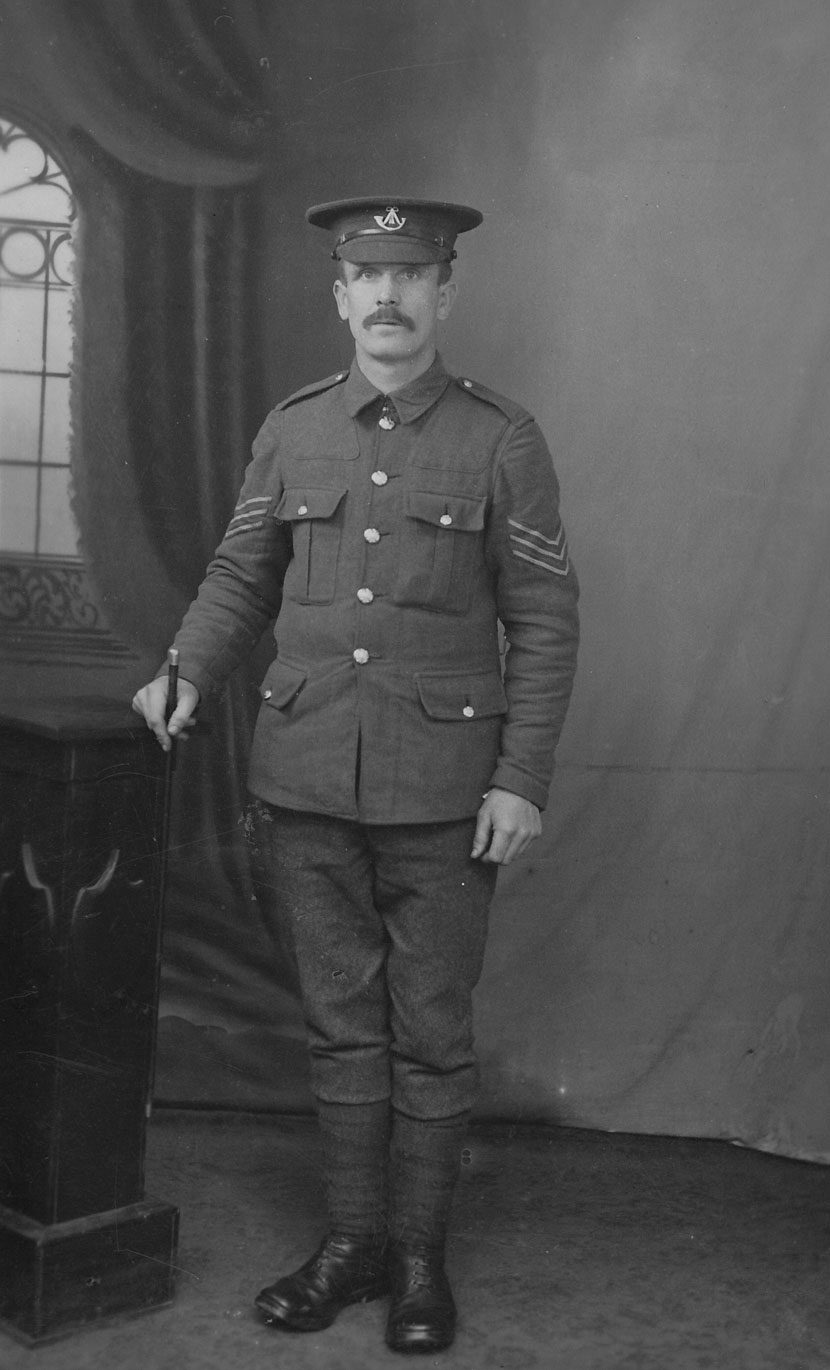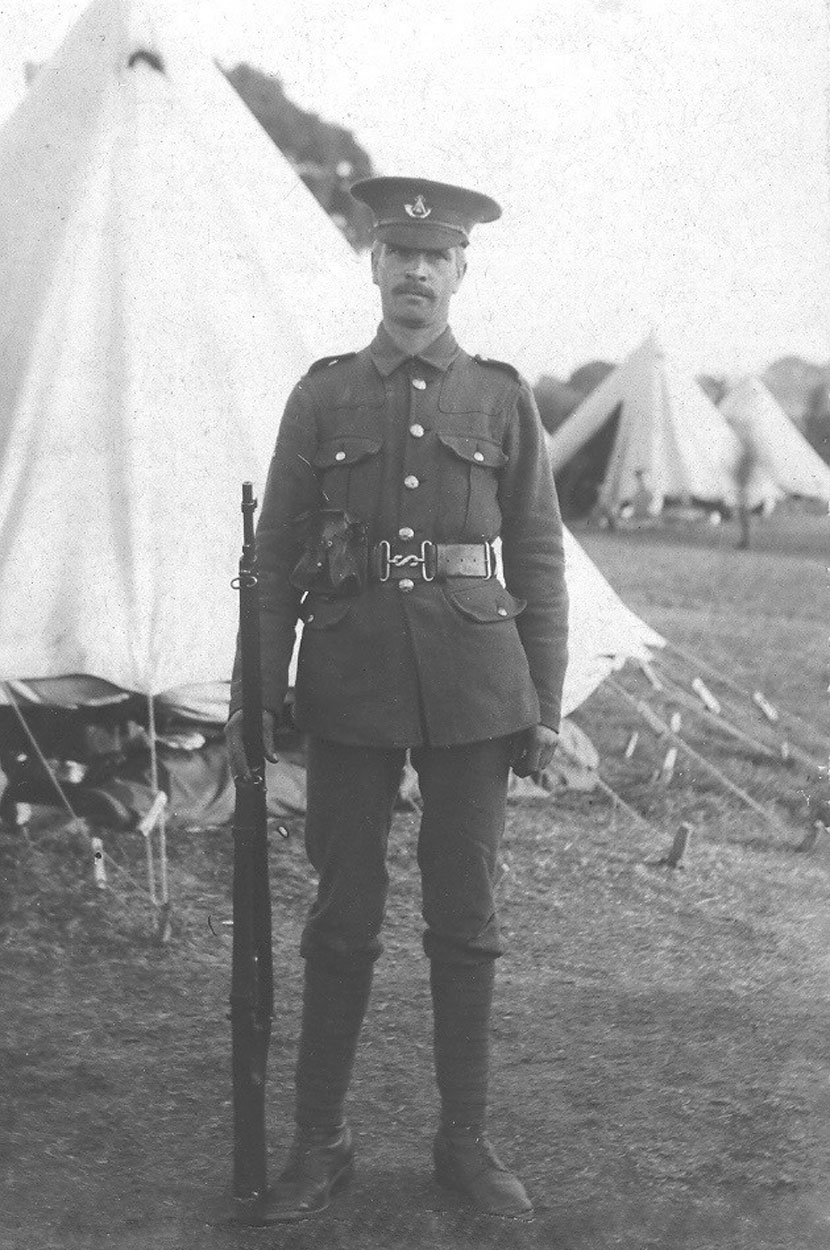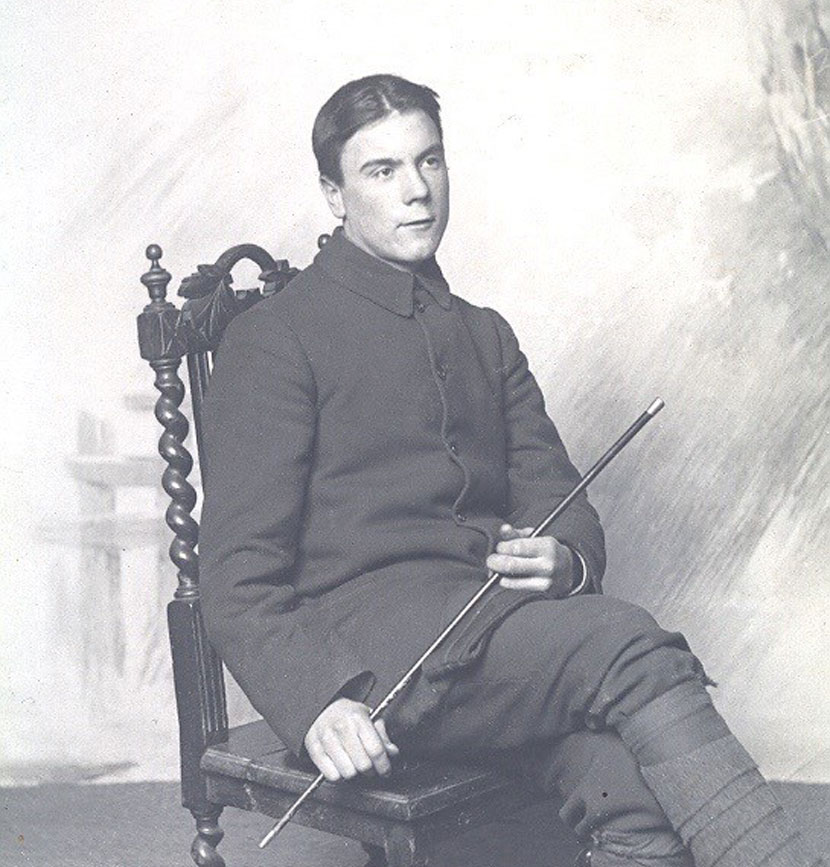

 Frederick Thorne (seated centre) with his comrades in arms in the Oxfordshire and Buckinghamshire Light Infantry
Frederick Thorne (seated centre) with his comrades in arms in the Oxfordshire and Buckinghamshire Light Infantry
In her 2016 book The King’s Sutton War Memorials – The Story of Those who Served, village resident Margaret Burne recounts the results of research she began as part of the First World War centenary commemorations in 2014. Margaret’s book provides a fascinating glimpse into King’s Sutton life over a century ago, but her interest in the period was never simply academic. Her three great uncles – brothers William, Frederick and Richard Thorne – all of them born in the village, saw military service during the Great War. Only one of the three survived.
Margaret’s great, great uncle William Thorne and his wife Ellen of Wales Street, King’s Sutton had four children. Their first-born, William, arrived on July 18, 1881. His sister Jane followed the year after. Frederick and Richard were born on July 26, 1887 and June 28, 1889 respectively. The children’s father William worked as a plate layer for the Great Western Railway. He was tragically killed by an express train in December 1910 while working near Twyford Mill (now Cherwell Valley Silos) when the children were all in the twenties.
The 1911 national census records brothers William and Frederick continuing to at 19 Wales Street, King’s Sutton with their mother Ellen, sister Jane (aged 29) and niece Miriam (Margaret Burnes’s mother, then aged eight). Their younger brother, Richard, was working at that time as a labourer and lodging with Albert George Stevens and family at Twyford, near Buckingham. When war came, all three sons joined up to serve king and country.
 |
| William Thorne photographed towards the end of World War I in his sergeant’s stripes |
William Thorne re-enlisted in the Oxfordshire and Buckinghamshire Light Infantry on November 23, 1914 (Army number: 81006), having previously served with the regigment for seven years. During the war he joined 136 Labour Corps, going to France in 1917. He had a number of promotions and transfers: promoted to Lance Corporal (October 13, 1915); promoted to Lance Sergeant when he was transferred to the Observer Corps (April 1, 1916); transferred to the Royal West Surrey Regiment (March 10, 1917); transferred to 29 Labour Corps (May 14, 1917); and promoted to Sergeant (May 18, 1917).
William was admitted to the Third Southern General Hospital, Oxford on December 17, 1918 with influenza, discharged and month later, and demobilised on February 24, 1919. Army records indicate that he was awarded the Meritorious Service Medal. William’s marriage to Margaret Pargeter was registered at Brackley in April-June 1915. Harry Jennings and Nellie Gurney were witnesses at the couple’s wedding and William was a witness at theirs.
Frederick Thorne worked as an ironstone labourer before enlisting with the Oxfordshire and Buckinghamshire Light Infantry, 145 Brigade, 48th Division. Frederick served as a Private (Army number: 5026) until his death on August 14, 1916 during the Battle of Pozieres Ridge on the battlefield of the Somme. His company were in Skyline Trench, to the left of Mouquet Farm which was held by the Australian forces.
 |
| Frederick Thorne died on the Somme in 1916 |
The battalion was under considerable artillery fire in an exposed position and suffered severe casualties. Only a few men were still alive at the end of the bombardment. Mouquet Farm still exists and the line of Skyline Trench can easily be identified using World War 1 trench maps and the battalion diaries. It is thought that Frederick was buried in what is now Pozieres Cemetery but this was obliterated in the Second Battle of the Somme in 1918 so he has no known grave. His name is listed on the Thiepval Memorial and he was awarded the British War and Victory Medals.
Richard Thorne served as a Private (Army number: 15779), with the Fifth Oxfordshire and Buckinghamshire Light Infantry, 42 Brigade, 14th Division. He was sent to France on May 20, 1915 and was killed in action some four months later on September 25 during the second attack on Bellewaarde. His company were in trenches by the wood surrounding Bellewaarde Farm, near Ypres. As they prepared to attack, the enemy were alerted to their position and put down considerable bombardment which resulted in heavy losses.
 |
| The Thornes’ youngest son Richard died on the first day of the major offensive battle at Loos in September 1915 |
Alongside Bellewaarde Farm (which still exists) is Railway Wood, where the 5th Ox & Bucks were positioned and were the line of attack through muddy ground can still be seen. The attack was a diversionary tactic on the first day of the major offensive battle at Loos. Richard was awarded the 1914-15 Star, and the British War and Victory Medals. His effects of £5 8s 4d went to his mother with a war gratuity of £3. He has no known grave but is remembered on the Menin Gate.
Click here for details of Margaret Burne’s book, The King’s Sutton War Memorials – The Story of Those who Served.
Click here to contact Margaret Burne by email.